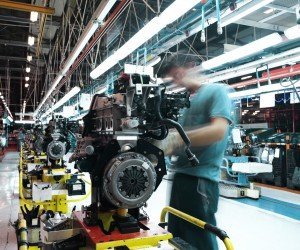 Manufacturers are critical to economic growth – even while commodity-based manufacturing is outsourced to other countries in exchange for the higher-value manufacturing currently experiencing a renaissance.
Manufacturers are critical to economic growth – even while commodity-based manufacturing is outsourced to other countries in exchange for the higher-value manufacturing currently experiencing a renaissance.
Despite their importance, manufacturing companies aren’t created equally. Some are more profitable than others, some are more established while others are more innovative with higher growth prospects. In most cases, these differing results aren’t due to luck or circumstance. Instead they are due to unique leadership traits of their executive teams.
During business transformations, which many manufacturers experience fairly regularly, leadership is critical and can make or break an initiative. For example, ERP implementations and business process reengineering initiatives require effective leadership traits that not all of them are cut out for.
Below are five leadership traits that we have found differentiate successful manufacturers from their more average-performing peers:
- Business transformations are most successful when they focus on enhancing competitive advantages. Some executive teams put too much emphasis on the details and not enough focus on how they plan to optimize competitive advantages such as ERP implementations. Successful manufacturing leaders, focus their time, energy and employee messaging to enable transformation. More specifically, they focus on preserving and expanding their unique competitive advantages in hopes to lead to more growth and success in the future. This mindset differs to the less successful companies, which tend to focus more on the technical constraints they want to address with their new transformation initiatives.
- Effective business transformation requires just as much organizational change management as it does technical focus. Too often, executives at our manufacturing clients state that organizational change management isn’t necessary for their companies. Sometimes it’s because their people are unlike other organization’s employees because they are “ready for the change” because the current state is so painful. Other times it’s because they view their command and control management style as surrogates for more finesse-based organizational change management. As we’ve learned with our more successful clients, effective organizational change management is key to any business transformation – regardless of what you might think about your company’s ability to change.
- There is no such thing as over-communication. I have yet to meet a manufacturing executive or project team who went too far with their communication to employees regarding their particular business transformation. More of often than not, executives feel as if they’re communicating enough simply because they’ve said what they need to say once or twice to employees throughout the cycle of the transformation. However, most ERP implementations or business process reengineering initiatives are too complex for the average employee to understand and embrace with a conversation or two. It takes the average person hearing a message seven times before it sticks; therefore, it is important to develop an organizational change management and communication strategy that reflects that commitment to their employees.
- The most successful manufacturers don’t overlook business process reengineering. Whether you are implementing a new ERP system, adopting new CRM software or embarking on some other type of business transformation, it will most likely entail significant changes to your business processes. Despite knowing the possible effects of this, not all manufacturers pay enough attention to the details of their business process reengineering. Rather than simply assuming that the to-be business processes will simply work themselves out with the adoption of a new system, successful manufacturing leaders recognize the need to proactively define and engineer how their business processes should and will look in the future. Building a well-oiled and world-class manufacturing organization requires this sort of discipline and focus on business processes – well beyond what most ERP vendors or system integrators will provide.
- The best manufacturing leaders walk the walk. In order for any of the above four critical success factors to occur, manufacturing executives need to provide the visible buy-in and support that will help rally the troops and get the organization aligned with the transformation. From proactively communicating the vision for the change initiative to allocating adequate resources and focus to the transformation, executives need to flex their leadership muscles throughout the entire change and beyond. Also important: expecting their entire executive team to be actively involved in the project via project governance and oversight, decision-making and redirecting the course of the change initiative where necessary. This is arguably the most important leadership trait that manufacturing executives can and should demonstrate to make their business transformations successful.
While there is no one-size-fits-all leadership style or silver bullet to managing change, these are some of the most common traits we see in more successful manufacturing organizations. By focusing on these five characteristics, you are more likely to successfully navigate the business transformations that you may be leading for your organization.
Learn more about making the best decisions for your organization ahead of time by registering for tomorrow’s webinar, ERP Software Selection Success: 10 Tips from the Pros at Panorama.













